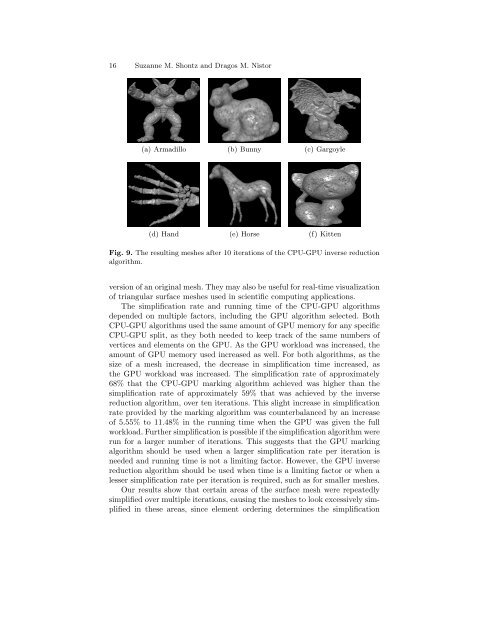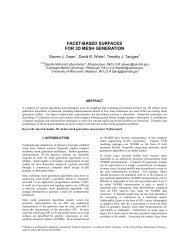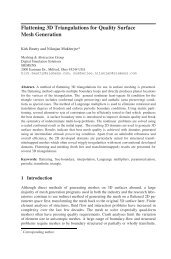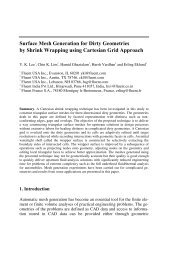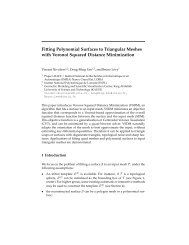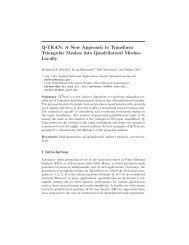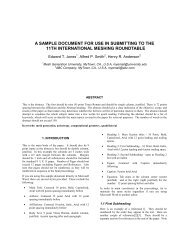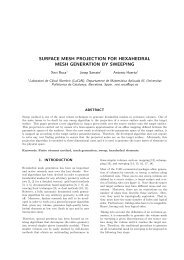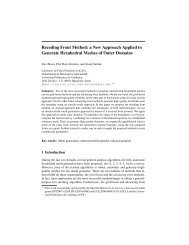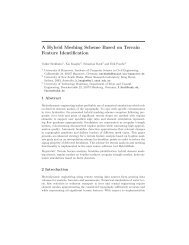CPU-GPU Algorithms for Triangular Surface Mesh Simplification
CPU-GPU Algorithms for Triangular Surface Mesh Simplification
CPU-GPU Algorithms for Triangular Surface Mesh Simplification
Create successful ePaper yourself
Turn your PDF publications into a flip-book with our unique Google optimized e-Paper software.
16 Suzanne M. Shontz and Dragos M. Nistor(a) Armadillo (b) Bunny (c) Gargoyle(d) Hand (e) Horse (f) KittenFig. 9. The resulting meshes after 10 iterations of the <strong>CPU</strong>-<strong>GPU</strong> inverse reductionalgorithm.version of an original mesh. They may also be useful <strong>for</strong> real-time visualizationof triangular surface meshes used in scientific computing applications.The simplification rate and running time of the <strong>CPU</strong>-<strong>GPU</strong> algorithmsdepended on multiple factors, including the <strong>GPU</strong> algorithm selected. Both<strong>CPU</strong>-<strong>GPU</strong> algorithms used the same amount of <strong>GPU</strong> memory <strong>for</strong> any specific<strong>CPU</strong>-<strong>GPU</strong> split, as they both needed to keep track of the same numbers ofvertices and elements on the <strong>GPU</strong>. As the <strong>GPU</strong> workload was increased, theamount of <strong>GPU</strong> memory used increased as well. For both algorithms, as thesize of a mesh increased, the decrease in simplification time increased, asthe <strong>GPU</strong> workload was increased. The simplification rate of approximately68% that the <strong>CPU</strong>-<strong>GPU</strong> marking algorithm achieved was higher than thesimplification rate of approximately 59% that was achieved by the inversereduction algorithm, over ten iterations. This slight increase in simplificationrate provided by the marking algorithm was counterbalanced by an increaseof 5.55% to 11.48% in the running time when the <strong>GPU</strong> was given the fullworkload. Further simplification is possible if the simplification algorithm wererun <strong>for</strong> a larger number of iterations. This suggests that the <strong>GPU</strong> markingalgorithm should be used when a larger simplification rate per iteration isneeded and running time is not a limiting factor. However, the <strong>GPU</strong> inversereduction algorithm should be used when time is a limiting factor or when alesser simplification rate per iteration is required, such as <strong>for</strong> smaller meshes.Our results show that certain areas of the surface mesh were repeatedlysimplified over multiple iterations, causing the meshes to look excessively simplifiedin these areas, since element ordering determines the simplification


